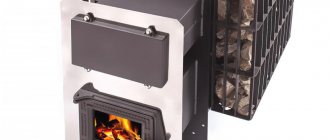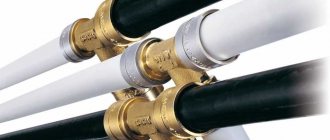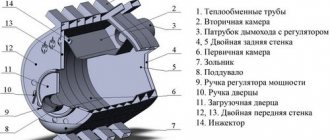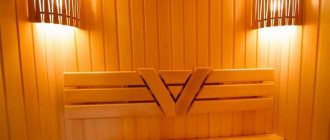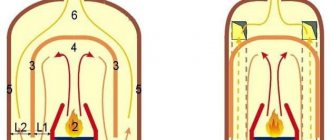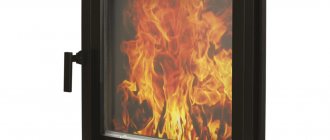close ×
It is quite possible to make a grate with your own hands in a home workshop. What is a stove grate, how best to make and install it - we will try to talk about all this in the article below.
The grate for the stove is part of the support platform in the form of a grate for laying solid fuel in the combustion chamber of the stove. The lattice can be either solid or in the form of bars laid in a row with spaces between them. The size of the grate depends on the size of the stove firebox. The material from which grates for furnaces are made in the factory is cast iron and steel. Homemade structures are assembled from steel elements.
Types of grate
Material
The temperature in the furnace is quite high, which forces craftsmen to make grates from special metals:
- The most durable is a cast iron oven grate.
- There are also steel parts, the most popular of which is antipyretic steel. Such grates are not susceptible to oxidation and corrosion when the flame burns, and also do not deform. These devices can have different sizes and shapes, the abundance of which makes it possible to choose a grate even for a non-standard stove model.
Example of a grate for a furnace
Solid and stacked
For convenient use, you can choose different grate designs:
- Solid. They look like monolithic gratings; they cannot be broken down into smaller components. Most manufacturers have standard oven grate sizes, focused on the most popular oven models. The choice of sizes of solid parts is quite large. Preference should be given to a certain product taking into account the fuel surface area.
- Stacked grates. They have a collapsible shape and can be assembled independently. The number of their components depends on the required area of the device. This guarantees their versatility, because the oven grate can be made in any size and is suitable for non-standard ovens.
Fixed
Fixed devices are grilles that do not move.
Subtypes of fixed grate:
- tiled flat, the most popular;
- basket, rarely used;
- beam
Tiled - these are rectangular-shaped parts and are the most popular. They can be used for any model, they are universal and easy to install. The stores offer a huge selection of grates of this particular type.
Basket grates are not very popular, because they are used for open ovens. In the old days, they were components of ovens on which food was cooked. Nowadays gas and electric stoves are used for this.
Beam gratings visually resemble a construction beam. They are assembled only by hand. Consumers like them for their versatility and the ability to install them in any oven.
Movable
Subtypes of movable grate:
- full-rotary;
- swinging;
- chain
Movable furnace grates consist of several parts. These include sections and shaft. Thanks to the possibility of rotation, the process of cleaning ash is simplified. Movable gratings are divided into full-rotating and swinging: the angle of inclination of the first is 180 degrees, the second can rotate from 30 degrees. Another type of such gratings is chain. In its design, the elements are connected to each other by chains. The disadvantage of this type of grate is the incomplete combustion of wood or coal.
Initial information
Self-made structures made of steel, when compared with their brick counterparts, are distinguished by the speed of construction and increased heat transfer. To carry out the work, it is enough to find a pipe whose diameter will be approximately 50 centimeters. Such products are especially relevant for small objects.
Requirements
Approximately the following pipe needs to be prepared.
- The heating structure must be located in a place where reliable fire protection is provided for materials subject to easy ignition.
- The area occupied by this object should not exceed 0.15 percent of the useful square footage of the heated room, since it is not very comfortable to carry out water procedures in a cramped environment.
- The side surfaces of the structure must be covered with heat-insulating materials so that the risk of burns is minimized.
- When installing, you should take care of the correct location of the stove, because the heat emanating from it should spread in different directions, thereby ensuring high-quality heating.
Basic elements
When making an iron stove for a bathhouse with your own hands, every novice craftsman must familiarize himself with the main components that make up the structure.
Any of the fragments listed below performs some function, so it is important to study all the details in full.
The structure of a sauna stove with water supply.
- The firebox is the main chamber where organic fuel is usually burned to heat the walls and then the surrounding air.
- The ash pit is located below the previous chamber, ensuring the collection of ash, which is formed as a result of the combustion of organic substances.
- The stone container allows you to lay cobblestones of jadeite, gabbro-diabase, crimson quartzite or other high-temperature resistant analogues.
- The pipe is a hollow product that is necessary to remove combustion products from the main chamber.
- The grate is an element inside the firebox that makes it possible to hold a layer of solid substance intended to produce thermal energy.
- Blower and firebox doors allow you to control the flame by covering it, which leads to a decrease or increase in oxygen inside.
- A pipe valve is usually made in the form of a control element that moves perpendicular to the working medium.
Shown is a homemade grate made from rebar.
Attention!
If the building combines a washing compartment and a steam room, then the hot water tank is installed directly on the stove.
However, in such a bathhouse it is also possible to have stands above the stones.
Dimensions
Another condition for choosing a grate for a stove is its length and width. The sizes of the grate for the furnace are different, they are determined by the type of fuel:
- For light firewood or briquettes, grates from 140x120 mm to 330x252 mm are sufficient.
- For coal, larger parameters are needed: 300x300, 350x300, since this fuel emits a large amount of harmful substances when burned.
Variety of grate sizes
Recommendations
The fuel material must be completely burned, and to achieve this goal, an optimal amount of oxygen must be supplied. Therefore, the total area of the distance between the grates is no more than 60% of the total area of the grate. If the distance is smaller, a small air flow will enter the stove; this will not be enough to maintain the combustion process in the combustion chamber.
If the distance between the grates is large, the fuel material will fall without having time to burn out. This will lead to an increase in combustion consumables.
The cast iron grate for the stove provides good traction and is used for burning wood, coal and fuel briquettes. Cast iron still occupies a leading position in the manufacture of grates. Since it is least susceptible to deformation at high temperatures.
Buying tips
For high-quality combustion, not only the size of the grate is important, but also the weight of the fuel that it can withstand in one laying. The rods should not deform or wear out.
The grate must have a sufficient number of holes - at least 40% of the area of the part itself. If this figure is lower, then there will not be enough oxygen to maintain the fire, and the ash will remain on the grate and clog the stove.
If the gaps in the grate have a large area, then the remaining fuel will fall from the combustion chamber into the ash pan. Fuel consumption will become uneconomical.
Optimal lattice option
Why is it needed?
As has already become clear, the grate is a grate that allows the air flow to penetrate directly to the combustion center below, and the ash to be removed through the holes to a specially designated place for it. So why do we need grates in a furnace? Installing a grate in a furnace allows you to solve a number of problems:
- Divides the combustion chamber into two zones - the combustion chamber itself and a niche for ash.
- Used for placing and drying fuel.
- Distributes the air flow from the ash pan.
- Promotes good traction.
- Together with the door it makes it possible to control and regulate the flame.
What is needed for production?
It is possible to make a grate with your own hands. What to make a grate for the oven from? It is better to use heat-resistant steel as a material, because it is impossible to work with cast iron at home. To make the grille, you can use any materials that have heat-resistant characteristics. This could be fittings, corners, steel pipes or strips of metal.
To make grate bars you will need:
- the metal from which the grille will be made,
- steel rods for creating partitions;
- ruler, tool for making marks;
- grinder for cutting material;
- welding.
A little history
Previously, firewood was burned on a blind hearth - combustion air was supplied through a slightly open fire door. This method has a fire hazard - coals may fall out of the firebox. It is also difficult to accurately select the optimal combustion mode - the regulator is very rough. The ash that covered the coals over time also did not contribute to the normal combustion of fuel - it is an excellent heat insulator (in the combustion chamber of a Russian stove, this is exactly how coals were stored in the ash for the next kindling). Therefore, they began to install a grate - a grate on the hearth through which oxygen enters the combustion zone. The ash is also removed through the grate - nothing interferes with the combustion processes.
The absence of a grate or its damage is not critical - the stove operates without it. True, the efficiency is somewhat lower. And the zone of intense heating of the masonry moves below the hearth - now the base of the ash chamber is also heated. And here you need to be careful if the stove is installed on a wooden base.
How to make grate bars for a stove with your own hands?
From reinforcement
It is not difficult to make a grate from reinforcement yourself. It is enough to select the desired length of the product and cut the reinforcement with a grinder. It is necessary to determine the number of strips and take into account clearances for ventilation.
When the required amount of material has been prepared, you can begin welding the grate using rods. Do-it-yourself grate bars for the stove made from reinforcement can be seen in the photo below:
Video instruction:
From the corner
Making a grate for a stove with your own hands from a corner is even easier than from fittings. To do this, it is enough to weld two corners of the required sizes together: one side is equal to the width of the product, the other to the length. The result will be a rectangular base for the future part. The grate can be made from reinforcing bars or thick mesh.
Video instruction:
Classification of grate
Cast iron grates for stoves were and are still the best option. Steel is less resistant to this mode of operation and is not able to accumulate heat, as cast iron does. Therefore, despite the heaviness of the material, it is cast iron wood-burning stoves - Harvia, for example, and cast iron grates that are considered the best. Moreover, this applies to models both for baths and for heating living quarters.
However, this classification exists:
- steel gratings are lighter. If you know how to handle a welding machine, they can be made with your own hands - for a bath structure, for example. However, the material burns out faster because it is less resistant to chemically aggressive substances.
- Cast iron grates for sauna stoves or other structures are much more stable and, therefore, have a long service life.
Another classification of devices is related to the type of device.
- Fixed - usually a lattice with different sizes for different types of construction. This element does not change its parameters and does not move. There are several types of grating:
- tiled flat - lattice flat rectangle. This is the most popular option and is used for any wood-burning sauna stoves, solid fuel heating boilers, fireplaces, and so on. The photo shows the Harvia model.
- basket - designed for open fireboxes and originally developed for cooking. This device is no longer used, and there are almost no open fires, so the popularity of this model is not great;
- beam - in appearance they resemble a construction beam. The lattice of them is assembled with your own hands, choosing the appropriate size and quantity. This is the best method for fireboxes of non-standard sizes.
The chain grate belongs to the same category: its elements are connected by chains. However, in practice it is extremely rare, since it does not ensure complete combustion.
How to install grate bars in the oven with your own hands?
To install the grate in the furnace, it is not necessary to call a specialist. You can do this yourself, spending very little time and effort on this process.
Installing a grate in a brick kiln has its own characteristics:
- You need to understand that metal tends to expand. Therefore, you need to make gaps of at least half a centimeter along all edges of the product.
- The grate should be placed a little lower (about one brick) from the firebox door. This will prevent heat from escaping from the oven.
Stage 1
Stage 2
Stage 3 - Do not pack the grates too tightly into the oven. This can lead to deformation and cracks when the metal is heated.
- The gap between the grate and the stove is filled with sand. It is important not to use cement admixtures, because the part should not be held tightly.
Does it matter which side the grates are placed in the oven? Yes, when the grill bars have a triangular or any other protruding shape, the top should point down.
Examples of installation in a brick kiln:
Example 2
Example 3
Example 4
Example 5
Metal heater stove, is it suitable for a bath?
This furnace design is the simplest. For work you will need sheets of steel with a thickness of at least 5 mm, a welding machine and a grinder (or a gas cutter), pipes for water supply and drainage, refractory bricks, stove clay solution, stones, pipes for the chimney, tap, stove doors with latches and hinges, metal profile for mounting the stove support.
The structure itself consists of a water tank with pipes and a tap connected to it. The tank is heated from the back wall of the stove, the internal space of which, in turn, is zoned into a firebox and an open heater. Flue gases are disposed of through a chimney exiting the firebox through the heater and the walls of the bathhouse.
First of all, it is necessary to cut out the bottom and side walls of the future stove from steel sheets and connect them by welding. We weld corners inside the stove - they will support the sheet of metal on which we will lay the stones.
On the front wall we cut out a rectangular hole for the door, and from the cut out rectangle we make a door. You can weld it around the perimeter with strips of steel for a tighter fit. We drill several holes in the lower part of the door or front wall of the firebox to allow air to enter the stove. We weld the door hinges and the hinge for the bolt.
To make a chimney, we will prepare a pipe and make a hole in the sheet of metal on which the heater will be located. We weld the pipe to the steel sheet.
Let's start installing the water tank. It consists of three walls and a bottom, hermetically welded together and the back wall of the furnace. We weld the inlet and outlet pipes for water to one of the side walls of the tank. Then we weld the tap at the bottom of the tank. We install the entire structure on a frame made of steel profiles or on a brick base 20-30 cm high. We cover the metal parts of the stove with fireproof paint. We lay stones on top (soapstone, porphyrite, basalts, etc.) ranging in size from 5 to 12 cm. We install the chimney and chimney, pour water into the tank, cover it with a lid and ignite the finished stove, checking the structure for the presence of draft and the absence of smoke in room.
To modernize a potbelly stove for a bath, you can equip it with an ash pit with a grate and a box for collecting ash. This will greatly simplify cleaning the stove, and the ash door will help to better regulate the draft, and, accordingly, the temperature and rate of fuel combustion. For the same purpose (regulating the heating temperature of the stove), as well as to reduce heat loss through the chimney, it is equipped with a valve. It can be a gate type or any other.
Price policy
A quality product cannot have a low price. High-quality cast iron parts that will last for many years are expensive. And vice versa, light and cheap ones, made from a mixture of unknown materials, will quickly become unusable.
Approximate prices for furnace grates:
| Size | Price |
| 800x200 mm | 1200-1600 rub. |
| 915x250 mm | 1100-3000 rub. |
| 260x540 mm | 400-500 rub. |
It is better to buy these products in specialized stores. They provide a wide selection of models with different materials and price categories. Consultants will help you make the right choice based on your preferences, the nature of the fuel, and the frequency of operation of the heating device.
Let's sum it up
- The best material for grates is cast iron. It is reliable and durable, it can be installed in brick and even steel ovens.
- When choosing a grate, you need to take into account the weight of the fuel and the area of the gaps. Monolithic models are easier to install, while modular models are well suited for assembling gratings of non-standard sizes.
- When installing, be sure to leave gaps for metal expansion and do not fill the grooves with cement.
If you take into account all these nuances, the new grate will last for decades, and you will not need to think about replacing it.
Conclusion
When choosing a high-quality grate, you should take into account the design features of the stove. The choice of a specific design and lattice components depends on the nature of the fuel. A grate for a sauna stove made of cast iron will last longer than the same one made of steel or other metals.
The weight of the fuel itself is also of great importance. Installing gratings does not require special knowledge. You can correctly place the grates in the oven yourself; it is enough to take into account only a few nuances. With the right choice of material and installation, they will last you a very long time.
Design features and types
The grate is a grate with separate elements that perform the function of maintaining fuel in the combustion chamber. Based on the design, it is customary to distinguish the following types:
- Flat tile grate. This grate for the furnace is the most common. It is also used in boilers and fireplaces. Its difference lies in certain dimensions. This nuance must be taken into account when laying the stove manually. An installation platform is required for installation into a heating device. It should be easy to remove and the gap should be at least 50mm. After all, almost all grates are made of cast iron, and when expanded, it can cause harm to the combustion chamber and ash pan.
- Beam lattice. This cast iron grate for the stove is stackable. The number of elements must correspond to the dimensions of the firebox. The beam option is the best for arranging a non-standard handmade stove. However, it is necessary to remember about the standards for its length.
Beam grate for oven
- Basket-shaped. Such grates can be used in open fireboxes. Recently, they are installed quite rarely, because a heating device of this type has lost its relevance.
Basket-shaped grate
- Movable grid. The main function in this case is to limit the size of the gap between the grates through the shift of the moving part in the horizontal plane. This is quite convenient for the automatic operation of long-burning stoves.
Movable grate design



